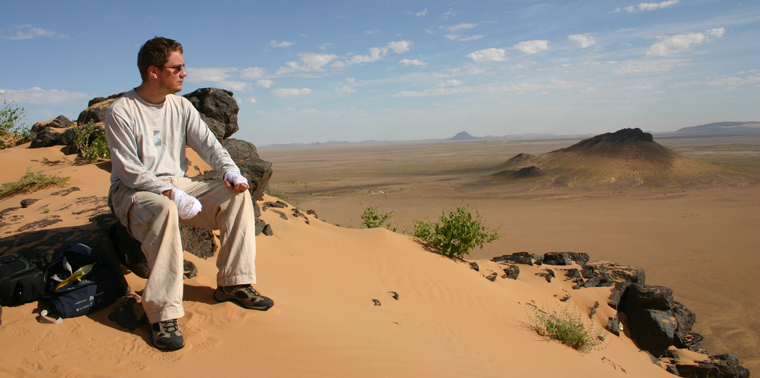January 28, 2013 — When you hear “National Geographic Emerging Explorer,” scenes of lions and tigers and bears, the tops of mountains and the depths of the sea, likely flash before your eyes.
In the case of Iain Couzin, the appropriate mental image would be something like a soaring flock of starlings so thick they look like smoke against the sky. Or a tide of flightless locust nymphs flowing across desert dunes. You might picture minnows swimming in schools. Or even commuters flowing through a subway station—undulating ribbons of humanity.
You see, when Couzin, a member of the ecology and evolutionary biology faculty at Princeton University who was named a National Geographic Emerging Explorer in 2012, goes exploring, it’s to delve into the mysteries of collective behavior—flocking, swarming and other examples of living things moving in unison. His fascination with movement in turn is moving the science of animal behavior to explore whole new realms, which include uncovering insights that might help keep people and nature compatible in an increasingly crowded world.
“A bird flock turning as one entity—the beauty of that I find captivating.”
Ironically, it was blind ants that led Couzin into this line of research. As a biology major at the University of St. Andrews in the U.K., he saw a documentary on BBC-TV on behavioral biologist Nigel Franks’ studies of how army ants, which can’t see, are able to follow each other in long, cohesive columns through the rain forest. He contacted Franks and ended up pursuing a Ph.D. with him. Soon, under the guidance of another graduate student, Guy Blanchard, his interests shifted from insects into collective behavior more generally.
“I’ve always been interested in art, painting, drawing, so I was naturally drawn to patterns formed by animal groups,” Couzin says. “A bird flock turning as one entity—the beauty of that I find captivating.” As a graduate student, Couzin says he incorrectly assumed there would already be a lot of research on how animals formed these coordinated patterns. “It astounded me there was nearly no research—it was a blank canvas.”
Among the things that intrigue Couzin about collective behavior is the 1+1=3 nature of it, meaning that the movement of animals in crowds cannot be predicted from the movement of individual animals. Instead, that movement is what biologists call an “emergent property”—something that is a characteristic of the interaction itself, rather than of the organisms involved. Using algorithms, computer programs, mathematical equations and more, Couzin observes, models, simulates and draws conclusions about those emergent properties from the many and varied ways living things move in unison.
Implications for the environment and sustainability are abundant. Computational models of the evolution of animal migration, for instance, have offered two profound insights into this large-scale collective behavior, which is threatened around the world by human encroachment on natural lands. First, encouragingly, migrations can be surprisingly robust. Animals may be able to maintain migration patterns even when they have to adjust to highways and other obstacles. Second, and far less encouraging, once a migration is disrupted to the point that it disappears, it’s gone forever—upsetting the balance of nature all along its path. Even if the animal species and the habitat that once supported its migrations recover, Couzin says, because it’s an emergent property, “you don’t recover the behavior.”
Couzin’s discoveries related to the emergent properties of collective behavior point to the need for additional research as well. In the 1800s, he notes, passenger pigeons blackened the sky by the billions. By 1915 they were extinct. “Collapse can be absolutely sudden,” Couzin says. “Why is that? We don’t know.” He hopes to find the answer with the help of mathematics-based models of flocks and swarms—and in the process provide valuable insights for efforts to save other species faced with habitat loss, pollutants and other assaults.
Though he prefers studying nonhuman animals, Couzin acknowledges people are a big part of the picture as well. One project he started in 2012 looks at two linked collective-behavior systems—ocean fish and fishermen. Bringing together social scientists, anthropologists, fisheries scientists and animal behavior experts, he’s painting a better picture of what it will take to keep both systems healthy.
What’s next? Couzin says he doesn’t have specific plans for future directions for his work. Instead, he seems to be taking a lesson from his study subjects and staying open to the influence of others as he sets his course.
“I’m excited that I don’t know where things are going,” he says. “I’m just really enjoying every day.”
Ensia shares solutions-focused stories free of charge through our online magazine and partner media. That means audiences around the world have ready access to stories that can — and do — help them shape a better future. If you value our work, please show your support today.
Yes, I'll support Ensia!
